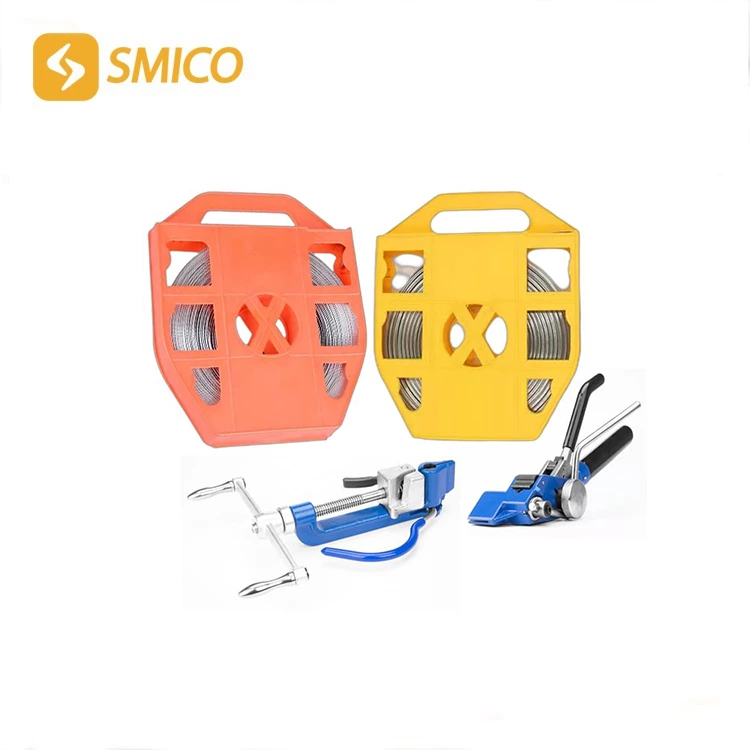More Detailed Information About Stainless Steel Cable Ties
The original and most common industrial application of the stainless steel ties is in the electrical and automotive industries. The metal wire ties was designed in the past for bundling and tying of electrical cables and wires. They help to organise large quantities of cables by bundling them together and are suitable for both indoor and outdoor use. In recent years, however, the stainless steel wire ties has become a common feature in UK homes - relying on the 316 stainless steel cable to complete many everyday tasks.
Size and Strength:
The ss zip ties comes in a wide range of sizes and tensile strengths to suit the safe and secure bundling of wires of all shapes, sizes and weights, whether very small wires or very large wires. These larger cables require a heavy duty stainless steel cable ties with the appropriate tensile strength to ensure secure bundling and tying.
Application Diversity:
They are commonly used in the automotive, electrical, telecommunications and transport industries, but they are also very popular aids in the office, home, DIY, cycling and hiking, where they find use in a variety of roles from the quirky to the very functional. They are made from a strong nylon polyamide, so they are suitable for both indoor and outdoor use.
How it works:
Cable ties are simple in design, with very little variation in appearance and construction across the globe. They are designed to have a row of serrated teeth on one side that are used to "lock" into the head on the other end. To install a cable tie, it should be wrapped around the item or items to be tied and the serrated end of the cable gently threaded through the head on the opposite side. The serrated teeth are designed so that they can move freely in the head as the strap is tensioned around its load, but will not move in the opposite direction, thus creating a lock that stays secure and will not come undone.
Types of Cable Ties:
With the use and applications of cable ties in so many industries, manufacturers have begun to develop a variety of specialty and colored cable ties. Today, cable ties are available in a rainbow of colors, and some of the specialty ties on the market include: stainless steel, screw mount, double loop, marker, push-on mount, and releasable ties.
Nylon 66:
The material of choice for standard plastic cable ties is nylon 66 (aka nylon 6/6), which is one of the most commonly used materials in the plastics and textile industries. An average of 2 million tons are synthesized each year. The compound has inherently high mechanical strength and stiffness, making it ideal for use in cable ties. It is also very stable in extreme temperature environments and is naturally chemically resistant. Additionally, aging does not adversely affect the structural integrity of nylon 66 cable ties, but it can cause discoloration.
Black is Back:
Black cable ties are often popular for outdoor operations due to their UV resistance. Like all cable ties, they are also resistant to oils, greases, and environmental contaminants. These nylon synthetic cable ties have a low coefficient of friction, impressive impact resistance, and excellent abrasion resistance. They are strong but lightweight, and they are very inexpensive to make. Overall, it is clear why the humble cable tie has become such a popular fastening device throughout the world.
Proper Storage - Cold and Dry:
In order to get the most out of your cable ties, storage is a must. Manufacturers recommend that you store your cable ties in a cool, dry place until they need to be serviced. Proper storage protects cable ties from the potential effects of oxidation and keeps them in tip-top shape for future use. Stainless steel cable ties are recommended for situations where a secure fastening is needed to protect against expected unusual corrosion and heavy weathering. Nylon 66 is weather-resistant, but stainless steel kicks it up a notch and further guarantees the ties’ secureness and resistance to degradation.
Secret to Success:
Really, it’s no secret. The root of the cable tie’s success is its wide range of applications and the fact that it’s so cost-effective. It can be used anywhere that cables need to be supported and tied, or more simply anywhere objects need to be secured and fastened. Once the tie is in place, the cable tie won’t come undone. When the other end of the toothed nylon tie is passed through the ratchet head, it’s locked in place. They’re strong, powerful, and can be relied on. Sometimes, the simplest designs are the most successful.

